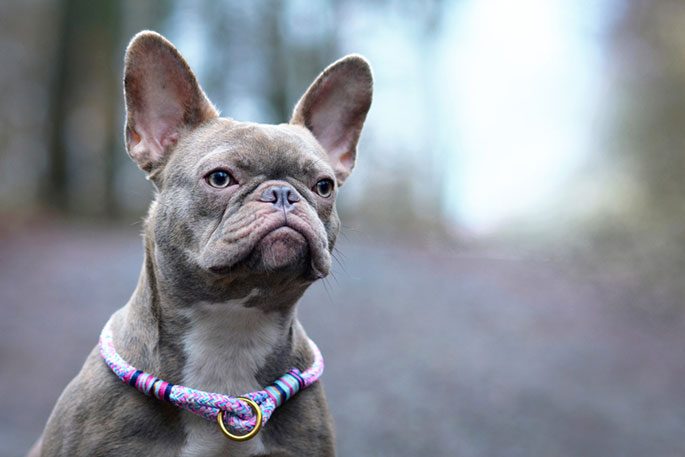
Have you heard of a silver Labrador Retriever? Yes, a ‘silver’ Lab!
Silver Labs do exist, and we are here to tell you all about this beautiful yet mysterious dog breed! Are you ready to hear all about it?
People have a number of questions about this silver dog, and we understand why. How did this dog get the silver coat?
Does it act just like a normal Labrador Retriever? Does it have any extraordinary qualities?
We are going to answer all those questions in this article. So buckle up, and let’s get started!
What is a Silver Factored Labrador?
A silver factored Labrador is a Labrador Retriever born from a silver parent. Yes, these Labs are not yellow, chocolate or black, but silver in color!
Just like its ancestors, the silver Lab is a good working dog. Highly energetic in nature, this dog needs a lot of exercises to get through the day happy.
If you love jogging, this dog can keep up with you until the end. The silver Lab is also popular as a gun dog, a show dog, a sniffer dog, an obedience dog, and a service dog.
Are Silver Labs Purebred?
According to the standard of the breed, silver Labs are not recognized as purebred Labrador Retrievers. Only the yellow, chocolate and black Labs are recognized.
However, in 1987, the LRC and the American Kennel Club acknowledged that there was no evidence of silver Labs not being purebred. Unfortunately, breeders of silver Labs are not maintaining breed standards in terms of health and performance, but only for aesthetics.
Silver Labrador puppies come from both silver parents. A silver parent and a brown parent may reproduce silver or chocolate puppies.
It is funny that no other countries have ever heard of a silver Labrador Retriever other than the United States. Commonly, the silver Lab is considered to be a variation of chocolate-colored Labradors. Similarly, blue Labs are just black Labs with a dilute gene that makes their coat appear blue.
Which Color Lab is the Best?
Although the various colors of the Labrador Retriever have been associated with different roles, but at the end of the day, it really doesn’t matter. Silver Labs are a new kind that is raising a lot of controversy and curiosity, so there is no section on them.
The top favorite Labrador Retriever breeds are yellow, black, chocolate, fox red, and white ones. Let’s get an overview of each.
Yellow Lab
Undoubtedly, the most popular Labrador Retriever is the yellow one. It has earned a good name as a service dog. However, back in the days, they were used as hunting dogs in England.
The original yellow Labs were darker than they are today. Nowadays, these dogs come in different shades of yellow from fawn to cream.
Black Lab
The color black is the original color of Labrador Retrievers. It is also the most common coat color for the dog breed.
In the beginning, black Labs were used to help fishermen, but their roles have dispersed to hunting and being pets. Known for possessing high intelligence, agility, and quick training abilities, the black Labrador gets along with both children and adults.
Chocolate Lab
The chocolate-colored Labrador is known to originate in the twentieth century. This dog is rare, so it is considered quite special.
It does not do so well as a guard dog. However, it has gained a good reputation as a family dog. Capable of extreme loyalty, the chocolate Labrador is generally adored by all!
Fox Red Lab
The red Labrador is sometimes known as the Ruby Labrador. The red shade is just a deeper shade of yellow, but very stunning.
The red Labrador Retriever is a good family pet. Just like the silver Labrador, the origin of the fox red Labrador is unknown. Hence, if you want to register your fox red Labrador with the AKC, you have to register it as yellow Labrador.
White Lab
As rare as chocolate Lab, for red Lab, and silver Lab, the white Labrador Retriever is distinctive. It is not albino, so beware.
Usually, it was bred with yellow Labradors, and the coat is just a pale version of yellow. Other features of the white Labrador are dark nose and brown eyes.
Where did Silver Labs Come from?
In the 1830s, the Tenth Earl of Home developed the Labrador Retrievers. They were a cross product of a St. John’s Water Dog and a famous hunting dog.
Then their puppies crossbred with other breeds. The breeders also experimented with their genetics for the next fifty years. Finally, in the 1880s, the Labrador Retriever was developed.
The yellow, chocolate and black Labradors were popular for the first seventy years. Yellow Labradors came with other variations – dark butterscotch and creamy white.
However, no variation emerged with black and chocolate Labradors until the 1950s. That is the origin of the silver Labradors.
It is a mystery where the silver dogs came from. The mystery of its origin and the beautiful silver coat captivated people’s hearts. Even though silver Labs are not accepted by the American and British Kennel Clubs, they are widely celebrated in the United States and the United Kingdom.
Silver Labrador Retriever Appearance
The silver color is quite rare for a Labrador Retriever to have. It is also rarer for Labradors that are bred for hunting to be silver. The silver-grey-blue coat attracts a lot of attention undoubtedly.
Usually, any other Labs, the silver Lab has a broad skull, broad chest, and thick hindquarters. Its ears are floppy and gracefully sit close to the head.
The tail is thick. The body is powerful and muscular.
It has pronounced eyebrows. Eyes are brown or hazel in color and express kindness. Furthermore, the lining around the eyes is black.
Some silver Labs may have blue eyes. But it only lasts for a few months before turning yellow.
Its jaws are also strong, hangs slightly, and curves delicately. The muzzle is medium length.
The coat is short, straight, and dense. So your Lab won’t get cold even if it swims in cold water. You can say that the coat is water-resistant, dry, and oily.
The ideal weight of an adult male Labrador Retriever is between 29 to 36 kilograms, and that of a female is between 25 to 32 kilograms. A male dog can reach a height of 22.5 to 24.5 inches, while a female dog can reach 21.5 to 23.5 inches.
Its medium-sized body was originally bred and trained for working alongside humans. ‘Conformation’ Labradors (show dogs) are stockier and shorter than ‘Field’ Labradors (working dogs). Conformation Labs are calmer than Field Labs due to the way they were raised.
Silver Labrador Temperament
Except for the color of the coat, a silver Lab is just a regular Labrador Retriever. It is playful, gentle, affectionate, and intelligent.
Known for hunting and working alongside humans, the silver Lab is quick to learn new tricks. It loves to play games with its owners and is quite skillful at that as well.
Your silver Lab will never get old. It will act childish and playful with you no matter how old it gets.
It will also get very close to you and may feel anxious even when a stranger tries to talk to you. It is very protective of its family, so you will always be protected.
The Labrador Retriever is one of the top highly intelligent dogs out there, and your silver Lab is no exception. According to the American Kennel Club, a Labrador Retriever is pleasant, kind, outgoing, and tractable.
Its sense of smell can detect anything, arson, hunt, drugs, murder, etc. It usually doesn’t give up until it finds the source of the smell.
Since it was bred to retrieve game, police forces, navies, and military forces today use this dog breed to track down thieves, smugglers, black marketers, and terrorists.
Some are athletically apt due to early training and discipline. The breed is naturally fearless, enthusiastic, and even-tempered. The females tend to show more signs of independence compared to males.
Training the Labrador from an early age will ensure that it grows up to be more disciplined and in control. Otherwise, uncontrolled behavior is prominent. Retrieving balls is a favorite sport for the Labs, including other activities, such as flyball, frisbee, and agility.
The silver Lab is not noisy in general, but it may bark when it is frightened. It loves people and may trust strangers easily, which is why it is not suitable as a guard dog.
The breed is curious and loves adventure. Interesting scents, for example, of food can easily catch its attention. Once something catches its attention, it can act single-mindedly.
Smart, steady, and easy to train, a Labrador Retriever has made its mark in the field of detection, search and rescue, and therapy work. No wonder Dr. Stanley Coren ranks this breed 7th out of 138 dog breeds in intelligence.
Is the Silver Lab a Good Family Dog?
Yes, a silver Labrador Retriever is a great family dog. It will enjoy the company of an outdoor-loving family the most, as the dog itself is full of energy and enthusiasm.
The silver Lab loves to cuddle and be cuddled. Cuddling helps dissipate body heat, and increases the bond between the dog and its family.
The puppies may be jumpy, so it is better to keep infants and toddlers away from them. But once trained and grown-up, the Lab will take care of your children!
The Lab is not an aggressive dog, hence, your children are safe with it. Bonding with the dog may require lots of playtime, which your children won’t mind for sure.
The dog can get along easily with other animals as well. However, the dog’s weight may be too large for small children and frail adults to handle.
Although Labrador loves people, training from an early age is essential to make sure it doesn’t hurt anybody. It still needs to be shown how to live in the human world and be social with everybody.
According to this research, a Labrador Retriever is five times less likely to attack people when compared to other dogs, like Doberman Pinscher and German Shepherd.
A silver Labrador needs to live in a large home with lots of space to play and exercise. A small apartment may stifle its natural abilities and make it sick. Some dogs even tend to chew objects and make a mess when contained in a small space for too long.
Since a Labrador needs plenty of exercises to feel good, you should take it with you to all of your family vacations. Take it with you for hiking, camping, jogging, and swimming!
In reality, this dog breed is not fit for families who are going to be away for too long. It needs companionship, nurture, and full-time attention. You can make up for the lost time by hiring a dog sitter or sending the lab to doggy daycare.
Puppies need more attention, especially when it has just joined your family. Expect the worst to happen when you leave silver Labs alone for too long. It can become depressed and destructive.
Now the question is whether a silver Labrador Retriever is suitable for a neat freak family? Well, the answer is ‘no’.
The dog will shed twice a year. It will swipe the garbage from the trash can, carry things around the house, pee in the backyard, drag food off the kitchen counter, and may look for things to chew.
Training and behavior therapy can help the dog adjust to a more civil state. But its behavior is quite normal for a dog. So think about it.
Exercise Requirements of a Silver Lab
The silver Labrador Retriever will show signs of displeasure if it doesn’t get enough exercise in a day. An hour or two of vigorous exercise is needed for this dog to stay happy, healthy, and obedient.
A Labrador Retriever will bark excessively, chew objects, dig, escape from home, and become restless if it has pent-up energy stored inside. Your job as its owner is to let those pent-up energies out through various sporty activities.
Running, jumping, swimming, playing fetch, retriever training, recall games, sprinting, and hiking are great ways for the Lab to burn off pent-up steam. Not getting enough exercise can make the dog gain weight, which may lead to heart diseases, joint damage, diabetes, and blood pressure.
A Labrador from a working line will require more exercise than a Lab from the show line. The amount of exercise required can also be determined by the age, health condition, and the genetics of the dog.
A puppy doesn’t need too much exercise. Five minutes of exercise everyday is just enough. You shouldn’t take it for a walk until its first birthday.
Walking can help once a year has passed. Generally, a 35-minute walk should do.
As the puppy grows up, it will be playing around a lot on its own or with its family. It may also get a good work out from climbing stairs, rolling on the carpet, chasing butterflies in the garden, etc.
Some dogs may have to slow down on the exercise after the seventh or tenth year. As it ages, regular exercise may become tough. A veterinarian can give advice on how much it needs to exercise when it reached old age after examining its overall condition.
Swimming and gentle walking can work for a senior silver Labrador Retriever. But due to its people-pleasing nature, it may chase a ball and hike with you despite old age. Go easy on it, ok?
Grooming and Shedding Requirements of a Silver Lab
A silver Labrador sheds just like a regular Lab. It shed twice a year (spring and fall), which is when you need to brush it more often. Otherwise, taking the time to brush its coat twice a week is enough.
The more you brush its coat, the less it will shed. By brushing more often, you can minimize the amount of hair it loses. Luckily, due to its coat being so short, you don’t need to give it a haircut.
Your silver Lab’s hair may gather in different locations of your house and car, but it is quite normal. You just need a vacuum cleaner to clean them up.
The Lab’s hair is dense and double-coated, which is why it sheds so much. The coat is water-proof and keeps your dog comfortable whatever the weather is.
An unspayed female silver Labrador may shed more than usual when it is on heat. Labs that live in hotter climates also shed more than dogs that live in colder areas.
Despite shedding being very normal for this dog breed, you should be up-to-date about your dog’s health. Consult with a veterinarian if you think it is shedding too much.
Sometimes a Labrador Retriever may shed excessively due to underlying illnesses, such as hormone imbalances, allergies, and stress. Feeding your Lab a nutritious diet can help control the amount of shedding. Omega 3 fatty acids will greatly improve your Lab’s skin health.
Feeding and Diet
The best dog food is the one that will keep your silver Lab in good condition. A balanced diet is recommended for the dog to live an optimum life.
Starting with puppies, the baby Labs can be fed wet food, dry food, home-cooked meal, kibbles, and raw food. Commercial puppy foods are not so bad when it comes to providing adequate nutrition to your pup.
You should be aware of the amount of food you feed the pup, and how many times a day. Overfeeding can cause it to gain weight, while underfeeding is going to hamper its growth and health.
A two months old puppy needs four meals per day, while a six months old puppy needs only two meals a day. A two month old puppy should ideally weigh 7 to 8 kilograms, and a six month old puppy should weigh 23 to 27 kilograms.
An adult Labrador Retriever should be fed kibbles and raw meat and bones. Some dogs are allergic to kibbles. Switching the brand to a different one often solves the problem.
Dogs that feed on kibbles may produce smellier poop and show signs of bloating, which does not happen with a raw meat diet. There are people who claim that feeding dogs raw meat and bones are dangerous, but some will disagree.
At the end of the day, it is best to let a veterinarian check your dog, and suggest the right diet. Health conditions, weight, age, and personality may differ between Labradors.
The package label of all commercial dog food sets the standard of how much your dog should eat according to its weight. For example, an 80 pounds dog needs to be fed three to four cups of kibbles daily.
However, the amount you should feed your dog varies for different brands. You should not only check with your veterinarian but also a few trial and errors may be needed to find the dog food that is just right for your Lab.
When you bring new dog food for your Lab, observe its physical condition for a week. If you see good changes, the food works for your dog. If not, it is time to change.
Top 5 Dog Food for Silver Lab
Now that you know a bit more about the adorable silver Labrador Retrievers, let’s have a look at the top commercial dog food for these pretty babies.
1. Wellness Core Natural Grain Free Dry Dog Food Large Breed Original

First on the list is the Wellness Core Natural Grain-Free Dry Dog Food, which is ideal for a large dog breed like the silver Labrador. Before we get into other details, we want you to know this dog food is only suitable for adult Labs.
Packed with delicious nutrients and flavored with chicken, this dog food will undoubtedly become your silver Lab’s favorite. You will be relieved to know that this dog food doesn’t contain any soy, corn, meat by-products or fillers, gluten, wheat, and artificial preservatives.
Pros
- Contains optimal amount of protein and calories.
- Improves joint health.
- Rich in minerals and vitamins.
- Contains glucosamine, antioxidants, omega fatty acids, and probiotics.
Cons
- Available in only one size.
- Pricey.
2. Taste of the Wild High Protein Real Meat Recipe Premium Dry Dog Food with Roasted Bison and Roasted Venison

Taste of the Wild is a well-known brand when it comes to dog food. With roasted bison and venison as the main ingredient, this dog food is loved by all dogs. It is rich in vitamins, minerals, and protein and can be considered as a superfood.
Due to the presence of probiotics in the food, your Labrador will be able to digest the kibbles quite easily. The high protein content is essential for the growth and maintenance of lean muscles in dogs. Also, the addition of omega fatty acids keep your Lab’s coat and skin healthy and shiny.
Pros
- Available in four sizes.
- Available in three flavors.
- Follows advanced food safety protocols.
- No preservatives, soy, corn, wheat, fillers, artificial colors and flavors.
- Affordable.
Cons
- May be linked to heart diseases in dogs.
- Protein content may be too high for some dogs.
3. Nutro Ultra Adult Dry Dog Food With A Trio Of Proteins From Chicken, Lamb And Salmon

Nutro Ultra Adult Dry Dog Food is made with chicken, lamb, and salmon – a perfect combo of nutrition! You will be delighted to know that the food is made without GMO ingredients, so it is perfectly safe for your little Lab.
The manufacturers have taken a holistic approach when preparing this dog food. You will notice your dog’s health improve dramatically as soon as it starts with this special diet. Moreover, the kibbles are small enough for small mouths as well.
Pros
- Suitable for adult dogs.
- Chicken is the main ingredient.
- No soy, wheat, corn, meat by-products, preservatives, artificial colors and flavors.
- Made with fifteen vibrant superfoods.
Cons
- Available in only one size.
- Expensive.
4. Dr Gary’s Best Breed Holistic Large Breed Dry Dog Food

Dr. Gray’s Best Breed Holistic Large Breed Dry Dog Food contains prebiotics and probiotics for easy digestibility of your silver Lab. Glucosamine in the product is derived from green-lipped sea mussels.
The dog food also contains omega 3 and 6 fatty acids for healthy skin and coat of your dog. The manufacturer has made sure the food can be consumed by dogs with allergies, digestive issues, and obesity. What’s more, it is a nutritionally dense diet perfect for your Labrador!
Pros
- Available in three sizes.
- Affordable.
- Made of chicken and menhaden fish.
- No soy, corn, peas or wheat.
- Suitable for puppies.
Cons
- Picky dogs may complain.
5. DIAMOND NATURALS Extreme Athlete Real Meat Recipe Dry Dog Food with Real Cage Free Chicken Protein

Diamond Naturals Extreme Athlete Real Meat Recipe Dry Dog Food is perfect for your large breed silver Labrador Retriever. It contains the nutrients of cage-free chicken and various other superfoods.
This dog food is ideal for active, athletic dogs, like Labradors. Fatty acids in the kibbles improve the skin and coat of your dog, whereas the probiotics aid in easy digestibility. Overall, it is a good brand and it tastes amazing!
Pros
- Follows food safety protocols.
- No fillers, preservatives, corn, grain, wheat, artificial colors and flavors.
- Helps maintain a good weight.
- Contains probiotics, prebiotics, and antioxidants.
Cons
- Only available in one size.
- Expensive.
Do Silver Labs have Health Issues?
A silver Labrador Retriever may be subjected to certain diseases like other Labradors. The diseases it is most prone to are cataracts, retinal dysplasia, epilepsy, hip dysplasia, hereditary myopathy, patella luxation and elbow dysplasia.
Are Silver Labs Part Weimaraner?
Both Labrador Retriever and Weimaraner are large breed dogs with a history as successful hunters. They are both full of energy, are friendly and loyal.
Many people have compared the silver Labrador Retriever with Weimaraner. They believe that the silver Labrador is a cross between a Labrador and a Weimaraner.
However, there is no evidence behind the rumor. Genetic testing on silver Labs has failed to prove that there is a relation between the former and Weimaraner.
Are Silver Labs Smart?
Silver Labs are one of the most intelligent and trainable dogs in the world. If you recall this fact that we mentioned earlier in this article, a Labrador Retriever ranks 7th out of 138 dog breeds that Dr. Stanley Coren has tested.
A silver Labrador Retriever is quick to learn, obedient, and empathetic. Hence, it is without a doubt, a smart dog!
Are Labs Easy to Train?
Yes, Labs are super easy to train, even when they have grown old. They were bred to run, work, and hunt all day. Due to their obedient and intelligent nature, the dogs are able to work alongside humans effectively.
How Much are Silver Labs Worth?
Due to rarity, some breeders may charge higher for a silver Labrador Retriever. However, generally, a puppy costs between $800 to $1,500.
Do Silver Labs Shed a Lot?
Yes, a silver Lab sheds a lot all year round. It sheds significantly twice a year – Spring and Fall.
You should brush its coat twice a week. But brush more often during shedding season.
Do Silver Labs Bark a Lot?
Silver Labs are not vocal, but sometimes situations may influence them to bark. For example, they will bark when they are bored and frustrated. Since the dog breed needs plenty of physical exercise and mental stimulation, a lack of it may encourage barking.
Are Labs Aggressive?
Generally, Labs are not aggressive dogs. It is not in their genes to attack others or throw a fit. Female Labs are just more territorial, demanding, stubborn and independent than the males.
Why are Silver Labs So Loyal?
Silver Labs are intelligent, obedient, eager to please, protective, easy to train, friendly and understanding. All these traits make them so loyal.
How Often Should You Bathe a Lab?
Ideally, you should bathe your dog only once a month or once every three months. The reason is because you don’t want to strip the natural oil on its skin by bathing it too often. Using soap and shampoo can remove the natural oil on its skin.
Silver Lab Fun Facts
Here are a few simple fun facts about silver Labs –
- The silver Labs made their debut in the 1920s.
- It is the most popular dog breed in the United States.
- It is a professional swimmer!
- The silver color in a Labrador Retriever is a result of diluted gene.
- It can consume between 1650 to 2400 calories a day which is a lot for its size.
- Its coat is so thick that it can even swim in freezing water!
The Silver Lab Debate
Whenever you search about silver Labrador Retriever on the internet, a hot debate presents itself. The debate is typically about its coat color.
There are a number of controversies regarding the origin of its silver coat. Some people believe that it is due to crossbreeding with a Weimaraner, although it has been proven wrong.
Some also believe that a silver Labrador is not a purebred dog. Here as well, the claim has been proven wrong, but the American Kennel Club refuses to acknowledge the silver Lab as a purebred.
Anyhow, breeders of silver Lab are pretty confident that they can control the coat color of the dog breed by preventing the passing of the dilute gene. All they have to do is cross-match the parent Labs carefully.
Conclusion
In all, the silver coat of this dog breed is indeed a curious topic. Hence, you can’t blame all those people for having doubts about its origin.
But it is for certain that there is no difference between a silver Labrador Retriever and a chocolate, yellow or black Labrador Retriever, except for the coat color.
Height, weight, temperament and health conditions – they are all the same for all Labrador Retrievers regardless of color. It is just a matter of preference which color of Labrador you want for yourself!
Related Post:





The Labrador is one of my favorite dogs. Haven said that, one of the astonishing facts about this breed is its variety, coupled with the high work rate and versatility of almost all these breeds.
Great job and well done with this article and site at large!